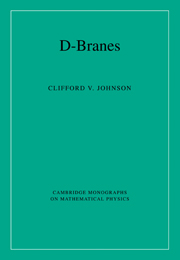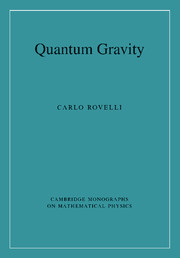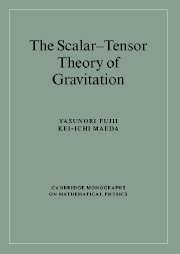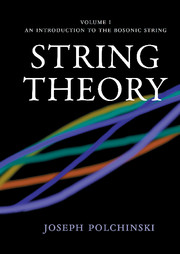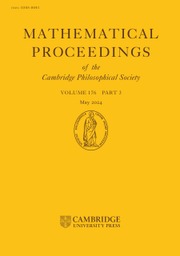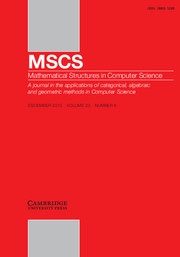A Short Introduction to String Theory
£34.99
- Author: Thomas Mohaupt, University of Liverpool
- Date Published: April 2022
- availability: Available
- format: Hardback
- isbn: 9781108481380
£
34.99
Hardback
-
Suitable for graduate students in physics and mathematics, this book presents a concise and pedagogical introduction to string theory. It focuses on explaining the key concepts of string theory, such as bosonic strings, D-branes, supersymmetry and superstrings, and on clarifying the relationship between particles, fields and strings, without assuming an advanced background in particle theory or quantum field theory, making it widely accessible to interested readers from a range of backgrounds. Important ideas underpinning current research, such as partition functions, compactification, gauge symmetries and T-duality are analysed both from the world-sheet (conformal field theory) and the space-time (effective field theory) perspective. Ideal for either self-study or a one semester graduate course, A Short Introduction to String Theory is an essential resource for students studying string theory, containing examples and homework problems to develop understanding, with fully worked solutions available to instructors.
Read more- A self-contained and accessible introduction to string theory for graduate students
- Based around a popular online course offered to junior PhD students in physics and mathematics
- Contains examples and homework problems with worked solutions available to lecturers; ideal for use in graduate course in string theory
Reviews & endorsements
'This book provides an excellent introduction to string theory aimed at graduate students in physics and mathematics learning the subject for the first time. It gives a careful pedagogical exposition of the foundations of the subject and introduces a number of more advanced topics. It is the ideal textbook for a first graduate course on string theory.' Chris Hull, FRS, Imperial College London
See more reviews'This book offers a gentle and lucid invitation to the vast subject of string theory, giving a systematic and self-contained exposition of the key ideas and concepts underlying its construction. It offers the reader a thorough pedagogical introduction to the interplay of the world-sheet and the space-time perspectives in string theory, supplementing the discussion with instructive homework exercises, valuable appendices as well as helpful literature references and suggestions for further reading, all of which are thoughtfully curated to provide the reader with essential background vis a vis the topics discussed in the book. As the prerequisites for the reading are kept minimal, this book is ideally suited for students with no previous exposure to the subject, but who wish to have a taste of the intellectual rewards and thrills of delving into the fascinating world of string theory.' Gabriel Lopes Cardoso, University of Lisbon
'With great pedagogical skill Mohaupt introduces his readers to the fascinating field of string theory. Essential concepts and many of the necessary tools are introduced, explained and applied in detail. With the careful choice of topics and the clarity of presentation, this book is ideal preparation for more advanced developments, some of which Mohaupt already whets the appetite for. I highly recommend it to ambitious undergraduate and beginning graduate students, who want to enter this area of active research.' Stefan Theisen, Max Planck Institute for Gravitational Physics (Albert Einstein Institute)
'Thomas Mohaupt's book provides a clear and concise introduction into the main aspects of string theory. I can recommend the book to all physics and mathematics graduate students, who have their first encounter with the world of strings, to learn about its basics and to see its connections to particle physics, quantum field theory and quantum gravity.' Dieter Lüst, Max Planck Institute for Physics (Werner Heisenberg Institute) and Ludwig Maximilian University of Munich
'This book complements the existing String Theory literature providing an introduction to Strings at a level in-between that found in other text books. The book presents a self-contained, clear and pedagogical discussion of the central topics and provides insightful comments on a variety of deeper conceptual points. It provides a well-rounded introduction to the many different ingredients of String Theory and describes the bigger picture of String Theory as quantum theory of spacetime and matter. It will be particularly useful to starting to early graduate students or Physicists from other fields.' Neil Lambert, King's College London
Customer reviews
Not yet reviewed
Be the first to review
Review was not posted due to profanity
×Product details
- Date Published: April 2022
- format: Hardback
- isbn: 9781108481380
- length: 250 pages
- dimensions: 262 x 184 x 21 mm
- weight: 0.636kg
- availability: Available
Table of Contents
Dedication. Preface. Acknowledgements. Introduction. Part I. From Particles to Strings:
1. Classical relativistic point particles
2. Classical relativistic strings
3. Quantized relativistic particles and strings. Part II. The World-Sheet Perspective:
4. The free massless scalar field on the complex plane
5. Two-dimensional conformal field theories
6. Partition functions I
Part III. The Space-Time Perspective:
7. Covariant quantization I
8. Intermezzo: Representations of the Poincaré group
9. Covariant quantization II
10. Light-cone quantization
11. Partition functions II
Part IV. Outlook:
12. Interactions
13. Dimensional reduction and T-duality
14. Fermions and supersymmetry
Appendix A
Appendix B
Appendix C
Appendix D
Appendix E
Appendix F
Appendix G. References. Index.-
General Resources
Find resources associated with this title
Type Name Unlocked * Format Size Showing of
This title is supported by one or more locked resources. Access to locked resources is granted exclusively by Cambridge University Press to lecturers whose faculty status has been verified. To gain access to locked resources, lecturers should sign in to or register for a Cambridge user account.
Please use locked resources responsibly and exercise your professional discretion when choosing how you share these materials with your students. Other lecturers may wish to use locked resources for assessment purposes and their usefulness is undermined when the source files (for example, solution manuals or test banks) are shared online or via social networks.
Supplementary resources are subject to copyright. Lecturers are permitted to view, print or download these resources for use in their teaching, but may not change them or use them for commercial gain.
If you are having problems accessing these resources please contact [email protected].
Sorry, this resource is locked
Please register or sign in to request access. If you are having problems accessing these resources please email [email protected]
Register Sign in» Proceed
You are now leaving the Cambridge University Press website. Your eBook purchase and download will be completed by our partner www.ebooks.com. Please see the permission section of the www.ebooks.com catalogue page for details of the print & copy limits on our eBooks.
Continue ×Are you sure you want to delete your account?
This cannot be undone.
Thank you for your feedback which will help us improve our service.
If you requested a response, we will make sure to get back to you shortly.
×


